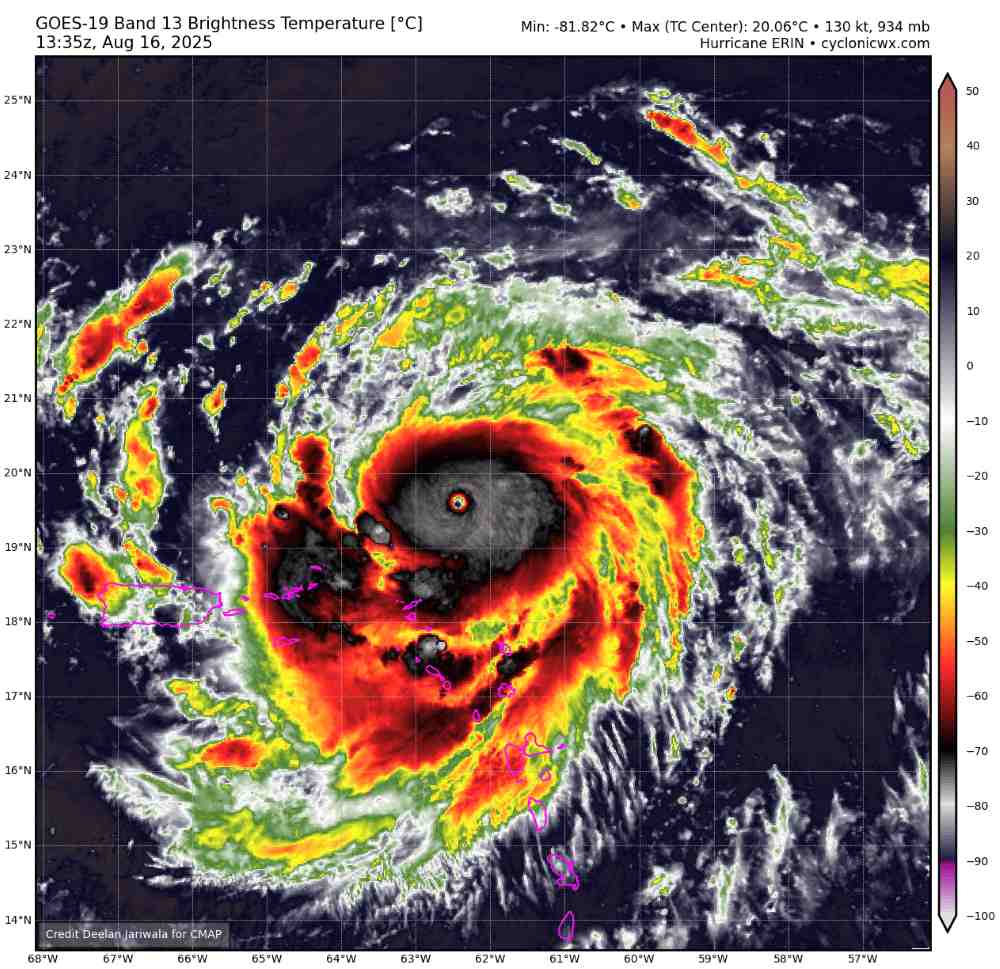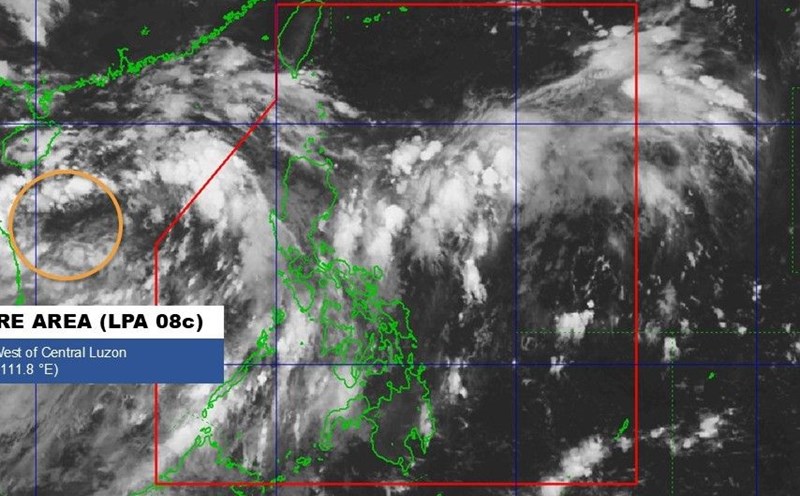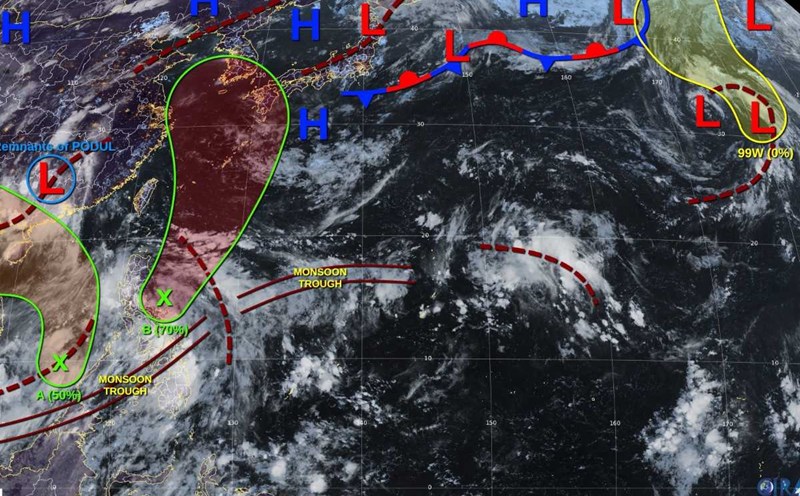According to the latest storm/low pressure information, in less than 24 hours, storm Erin from Category 1 exploded to Category 5 with winds of nearly 260 km/h, the most rare and dangerous level in the Saffir-Simpson storm scale.
According to the National Hurricane Center (NHC), at 11:00 a.m. on August 15 (local time), Erin was a Category 1 storm with winds of 120 km/h. However, by noon the next day, it had become a Category 5 monster with winds reaching 257 km/h, entering the group of 43 Category 5 storms that were previously recorded in the Atlantic, and the 11th storm since 2016 alone.
It is worth mentioning that this super typhoon is also forecast to continue to strengthen and expand by double or even tripled in size as it moves north. This is a rare rate of increase before September - which is the peak of the storm season.
Experts say rapid intensification - when the storm increases at least 55 km/h in winds within 24 hours - is becoming more and more common as the Earth heats up. Warmer-than-normal Atlantic Ocean waters from climate change and emissions are the fuel that feeds Erin.
We are seeing a clear demonstration of the extreme degrees that warming climate can create, a meteorologist said.
Although not forecast to make landfall directly, Erin could still cause dangerous high waves and offshore flows along the Bahamas, the East Coast of the United States and Canada next week.
Puerto Rico, the Virgin Islands and the Leeward Islands are currently experiencing heavy rain, gusts of wind and flash flood warnings. Some places may experience up to 150mm of rain, with the risk of landslides.

The US Coast Guard has closed many seaports in Puerto Rico and the Virgin Islands for prevention.
The East Coast and Bermuda are still in danger if the storm changes direction unexpectedly.
Before Erin, there were four storms in the Atlantic this year, but none have exceeded tropical storm strength. Erin is not only the first strongest storm, but also signals a season with predicted extra activity than average.
This is the fourth consecutive year that a Category 5 storm has occurred in the Atlantic, following terrible names such as Hurricanes Beryl and Milton in 2024. Long-term forecasts from the US Climate Prediction Center show that the waters where Erin formed will continue to be a hurricane-producing hot spring for at least the next few weeks.












